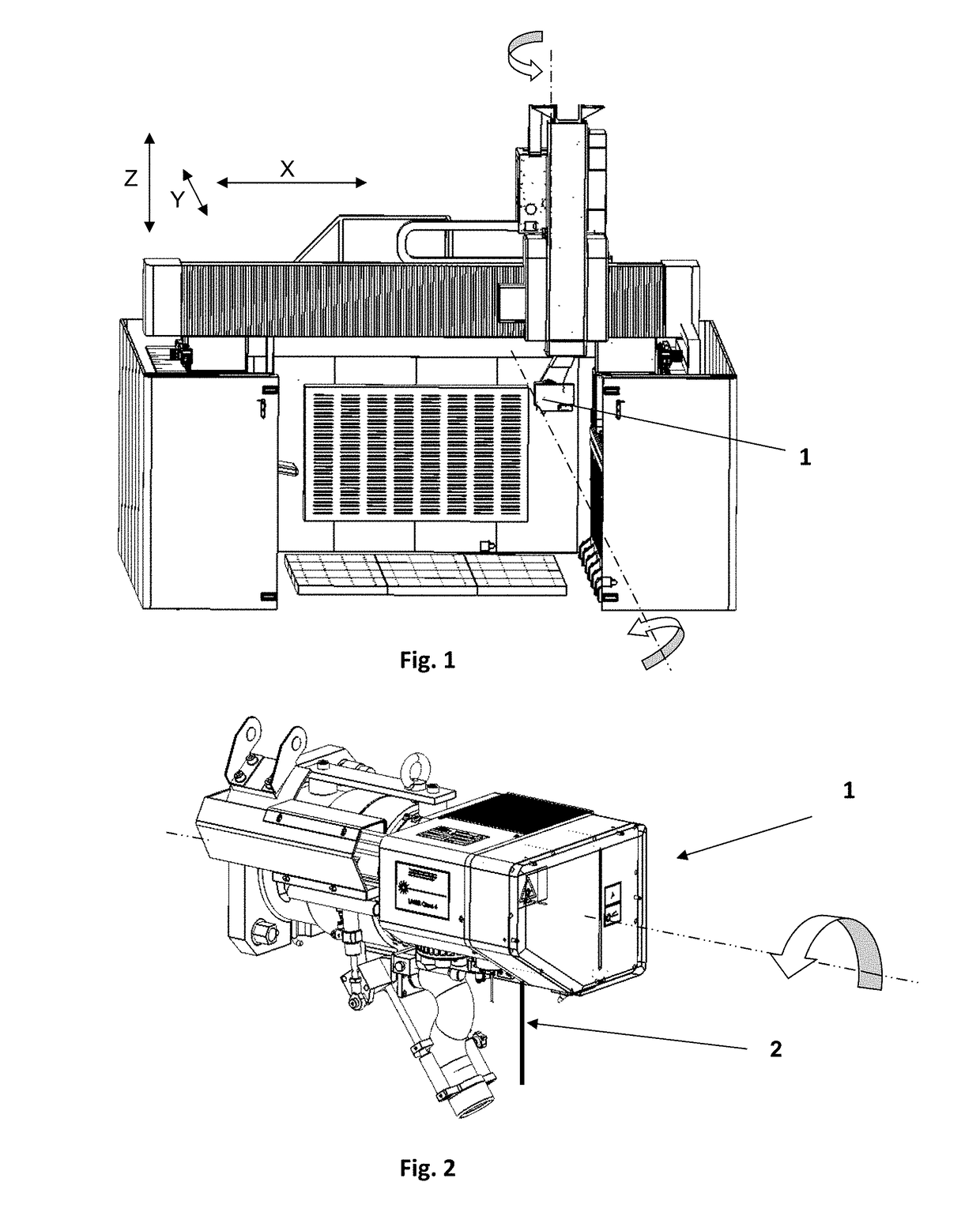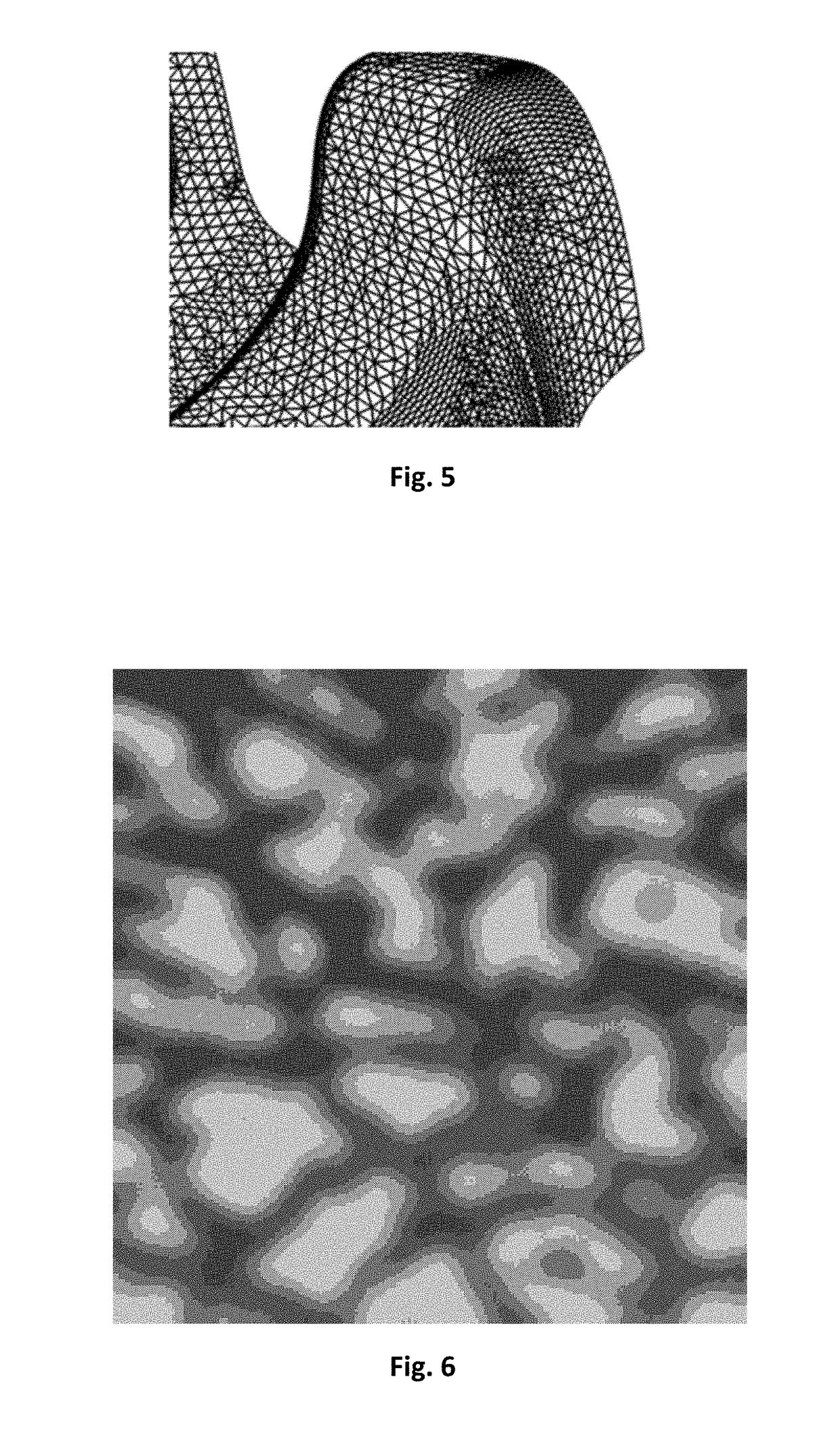Method for defining a laser tool path
a laser tool and path technology, applied in the field of laser machines, can solve the problems of generating defects at the boundary of adjacent patches, not systematically obtaining good, and still appearing defects in certain 3d geometries, so as to reduce the effect of surface quality improvemen
- Summary
- Abstract
- Description
- Claims
- Application Information
AI Technical Summary
Benefits of technology
Problems solved by technology
Method used
Image
Examples
Embodiment Construction
[0039]Different embodiments according to the invention are described in relation to figures FIG. 1 to FIG. 15.
[0040]In order to compute a machining path, a method according to the invention for defining a sequence of relative positionings of a laser head (1) in relation to a part consists of a succession of steps schematically illustrated in FIG. 8.
[0041]In a step 100 of definition of layers, N machining layers 12 are computed in the usual way from 3D modelling data of the part and texturing data.
[0042]In a step 200 of definition of closed patches, there are computed, for each machining layer 12, based on elements of the 3D meshing of the part, closed patches 15 each intended to be machined from a single position of the laser head 1, and whose boundary is not affected by the laser ray 2. These closed patches 15 correspond to the patches defined in the document EP 3 047 932.
[0043]FIG. 9 illustrates a part of a machining layer 12 out of the N machining layers. The triangles represent ...
PUM
| Property | Measurement | Unit |
|---|---|---|
| focal lengths | aaaaa | aaaaa |
| focal length | aaaaa | aaaaa |
| focal length | aaaaa | aaaaa |
Abstract
Description
Claims
Application Information
 Login to View More
Login to View More - R&D
- Intellectual Property
- Life Sciences
- Materials
- Tech Scout
- Unparalleled Data Quality
- Higher Quality Content
- 60% Fewer Hallucinations
Browse by: Latest US Patents, China's latest patents, Technical Efficacy Thesaurus, Application Domain, Technology Topic, Popular Technical Reports.
© 2025 PatSnap. All rights reserved.Legal|Privacy policy|Modern Slavery Act Transparency Statement|Sitemap|About US| Contact US: help@patsnap.com



